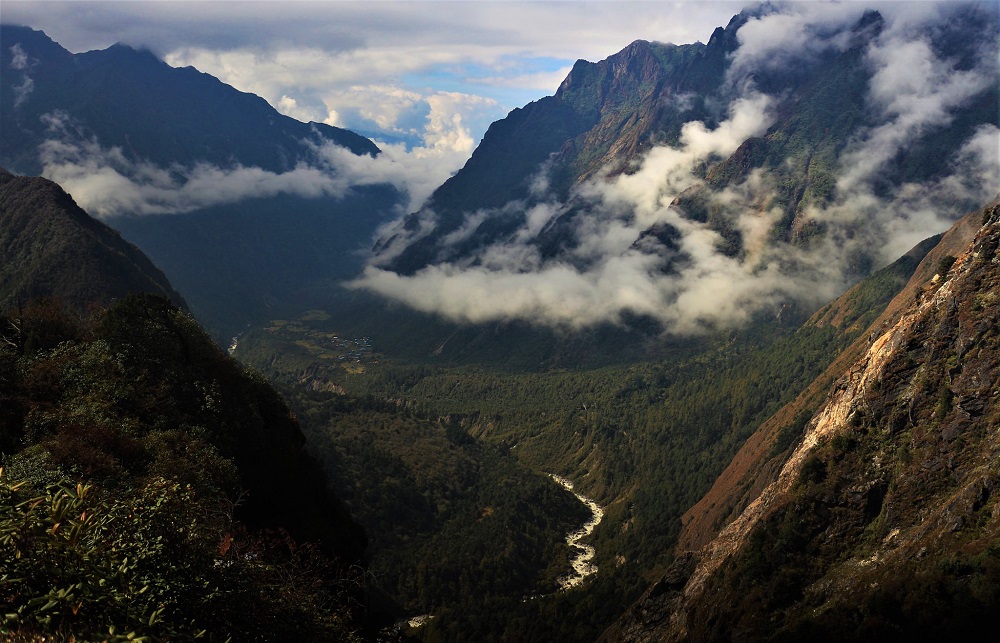A comprehensive guide to Kanchenjunga Base Camp trekking | All you need to know about Kanchenjunga base camp trek
Introduction:
The Kanchenjunga Base Camp trek is a mesmerizing adventure that takes you to the base camp of the third highest peak in the world, Mount Kanchenjunga (8,586 meters/28,169 feet). Located in the eastern part of Nepal, this trek offers stunning views of snow-capped peaks, remote villages, lush valleys, and diverse flora and fauna. In this guide, you will be provided with all the essential information you need to know before embarking on the Kanchenjunga Base Camp trekking journey.
1. Trekking Route Options:
a. North Base Camp: The North Base Camp trek is less frequented and more challenging compared to the South Base Camp. It involves rugged terrain, high passes, and remote areas with limited facilities. This route offers a more rugged and adventurous experience, with stunning views of the Kanchenjunga massif.
b. South Base Camp: The South Base Camp trek is the more popular option, with better infrastructure and more tea houses along the route. It provides a diverse landscape, including lush forests, terraced fields, and traditional villages. This route also offers breathtaking views of the surrounding peaks.
2. Permits and Regulations:
a. Kanchenjunga Restricted Area Permit: This permit is required for trekking in the Kanchenjunga region and can only be obtained through registered trekking agencies in Nepal. Therefore, a licensed guide is mandatory to trek with. The permit fee varies depending on the season.
b. Kanchenjunga Conservation Area Entry Permit: This permit is necessary to enter the Kanchenjunga Conservation Area. It can be obtained in either Suketar or Taplejung, the starting points of the trek.
3. Best Time to Trek:
a. Spring (March to May): This season offers pleasant weather, with blooming rhododendron forests and clear mountain views. However, the temperatures can still be cold at higher altitudes.
b. Autumn (September to November): This season is the most popular for trekking. The weather is stable, with mild temperatures and clear skies, providing excellent views of the mountains.
Winter and monsoon seasons are not recommended due to harsh weather conditions and increased risks when the good views are also not guaranteed.
4. Physical Fitness and Acclimatization:
a. Physical Fitness: The Kanchenjunga Base Camp trek is a strenuous trek that requires good physical fitness. Regular exercise, cardiovascular training, and strength-building activities are recommended to prepare for the trek's demanding terrain.
b. Acclimatization: Adequate acclimatization is essential to prevent altitude sickness. It is recommended to include rest days in your itinerary to allow your body to adjust to increasing altitudes gradually. Hydration, proper nutrition, and a slow ascent rate are crucial for a successful and safe trek.
5. Accommodation and Facilities:
a. Tea Houses and Lodges: Along the trekking route, there are tea houses and lodges that offer basic accommodation and meals. These establishments provide a warm bed, blankets, and simple but nourishing meals. However, the facilities may be more basic in remote areas, so it's advisable to carry essential items with you.
b. Personal Items: It is recommended to bring a sleeping bag suitable for cold temperatures, warm clothing layers, a good-quality trekking gear, and a backpack with sufficient capacity to carry your essentials.
6. Safety and Health:
a. Altitude Sickness: Altitude sickness can be a concern during the trek, especially as you reach higher elevations. It is important to recognize the symptoms, such as headache, nausea, dizziness, and shortness of breath, and descend if necessary. Always follow your guide's instructions and drink plenty of water to stay hydrated.
b. Travel Insurance: It is highly advisable to have travel insurance that covers emergency medical evacuation in case of any unforeseen circumstances or accidents.
c. Hygiene and Water: Maintain proper hygiene practices throughout the trek, including hand washing and using hand sanitizers. Carry water purification tablets or a water filter to ensure safe drinking water, as bottled water may not be readily available in remote areas.
7. Packing Checklist:
- Sturdy trekking boots
- Warm clothing layers (thermal wear, down jacket, fleece)
- Trekking pants and waterproof trousers
- Moisture-wicking t-shirts and thermal tops
- Hat, gloves, and sunglasses
- Sunscreen and lip balm with high SPF
- Trekking poles
- Sleeping bag and sleeping mat
- First aid kit with essential medications
- Headlamp with extra batteries
- Snacks and water bottle
- Camera or binoculars
- Portable charger and travel adapter
8. Cultural Etiquette and Respect:
a. Local Culture: The Kanchenjunga region is inhabited by indigenous communities with their own unique culture and traditions. Respect their customs and beliefs, and be mindful of local sensitivities.
b. Interactions with Locals: Learn a few basic Nepali phrases to communicate with the locals and show respect by asking for permission before taking photographs. Engage in friendly and culturally sensitive interactions.
c. Environmental Responsibility: Practice responsible tourism by adhering to the principles of Leave No Trace. Carry your waste and dispose of it properly in designated areas. Respect the natural surroundings and wildlife.
Conclusion:
Embarking on the Kanchenjunga Base Camp trek is an extraordinary experience that offers breathtaking natural beauty and a glimpse into the local Himalayan culture. The Kanchenjunga Base Camp trek is an awe-inspiring adventure that requires proper planning, physical preparation, and adherence to safety guidelines. By considering the route options, obtaining the necessary permits, choosing the right time to trek, and taking care of your physical and mental well-being during the journey, you can make the most of this incredible experience while respecting the local culture and preserving the pristine environment. Happy trekking!




.jpg)



